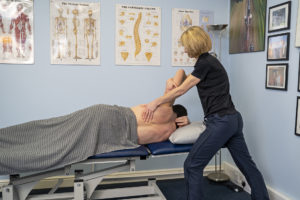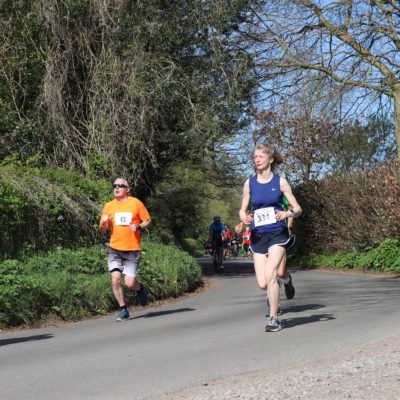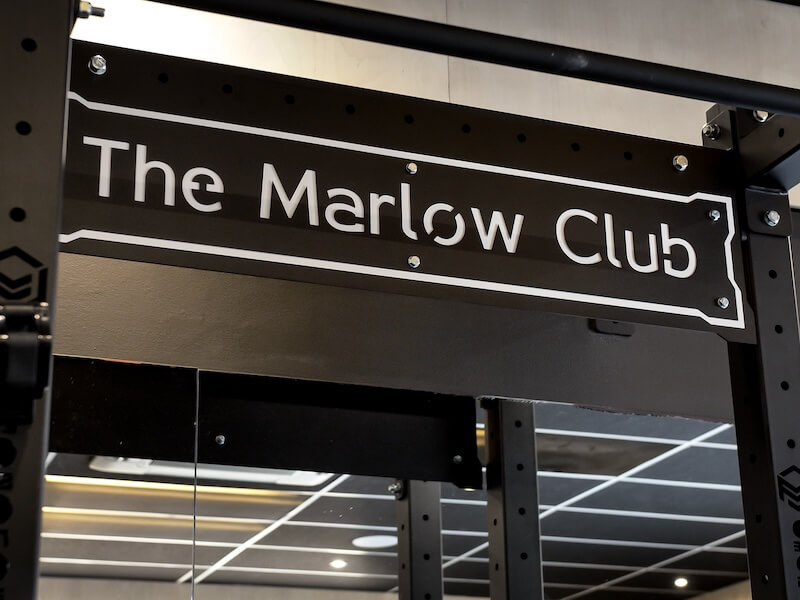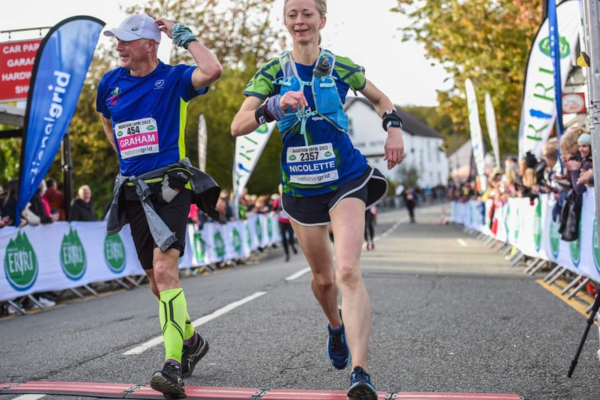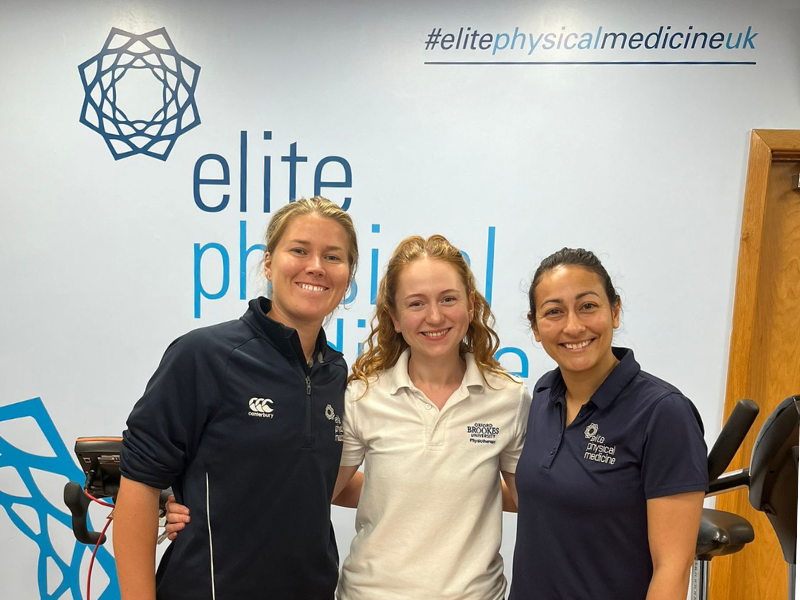Should massage be part of your plan?
With more than 15 years’ experience in massage therapy and two marathons under her belt, Nicolette Hayers’ reputation at the clinic precedes her – and rightly so. Here Nicolette de-mystifies massage and dispels five common myths about this popular treatment.
Myth No. 1: Massage therapy is only for “serious” sportspeople
It’s true that massage can play a valuable part in supporting exercise and ongoing maintenance for anyone who plays sport. And if you’re working on increasing your fitness, or following a specific training programme, massage can help you to maximise the benefits of your training. But there’s so much more to massage than that.
Nicolette says:
“There are no requirements for massage therapy! You don’t have to be an athlete, or training for a specific event, to justify booking this treatment for yourself, or for a loved one. You don’t have to have a long list of sports-related injuries and you don’t have to wait until you’re in pain to come and have a treatment.
I see a lot of desk workers who have developed muscular issues – not through exercise but just by spending a lot of time in front of the computer. This can lead to neck, shoulder, and lower back issues, which can be significantly improved with massage.
Poor posture and even just sitting for long periods of time can lead to the fascia becoming quite bound down around a muscle and a build-up of painful areas within the muscle fibres.
This is what we experience as “knots”. All the movements that we do in massage are to get the circulation into that localised area to flush it out: get the nutrients in there, remove the waste products, and then encourage everything to glide and start to move more freely again.
I also treat a number of patients with chronic pain conditions, from Fibromyalgia to connective tissue disorders such as Ehlers Danlos. Whilst massage can’t resolve the underlying issue, it can be useful to get some pain relief.”
Massage is beneficial for patients who’ve had surgery, such as hip or knee replacements, and are seeing a physiotherapist as part of their rehabilitation. Massage therapy is also helpful for anyone who has been left with scar tissue following an injury or surgery which is affecting the fluidity of their movement.
Myth no. 2: Massage is a post-event treatment
Focusing on massage to support sports and exercise, a common misconception is that this treatment is only necessary after a sporting event.
Nicolette says:
“Prevention really is better than cure, and massage is a great way to support your training in the run up to a big event, so that you’re less likely to get injured.
Rather than promising yourself a massage as a reward for achieving your goals (when the damage to your muscles will already be done!) consider booking a massage as part of your pre-habilitation.
Massage can be a really helpful preventative measure and it’s something that compliments training in advance of an event. When a patient books a massage and talks to me about what it is they’re working towards, I can systematically work through all the muscle groups that they’re using in that sport, to make sure that everything is as mobile and functioning as well as it can be.
I’m a runner myself and have completed marathons, so I have personal insight as well as professional experience of what happens as you start building your mileage up. Your muscles get fatigued and can start to feel really heavy. Rather than pushing through until you’ve completed the event, a massage beforehand really helps to “lighten” up your legs and give you back more movement.“
Wondering whether your muscle pain might be something more serious? Don’t wait until the week before your event! The sooner you come into the clinic, the sooner we can help.
Myth no. 3: Massage is only effective if it’s painful
A worryingly high number of patients have experienced sports massage treatments that are not only excruciatingly painful but have left them bruised and sore for days afterwards. So is there merit in the “no pain, no gain” mentality?
Nicolette says:
“Massage doesn’t have to hurt to be effective. I’ve had people come to me feeling really anxious because they’d had treatments elsewhere which hurt and that they didn’t even see much benefit. At Elite, every treatment we provide is tailored to the individual and we are trying to ease discomfort, not add to it.
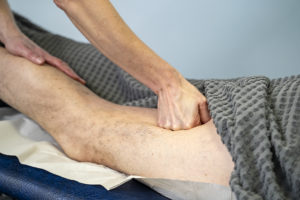
Some techniques can be a little bit uncomfortable because we’re working into muscles where tension has built up, potentially over a long period of time. But you need to feel relaxed in order to help release that tension, so that’s an important part of the treatment as well.
As a result of exercise – particularly strength training and progressing training programmes – muscle fibres become damaged. Ultimately those muscle fibres will repair themselves over time and get stronger, but they may not glide nicely alongside each other because the fibres and the fascia can get stuck together.
Releasing tense muscles is very much tailored to each patient individually. Communication prior to and during the treatment will ensure that the treatment is within your comfort level and anything that isn’t can be adjusted.”
Myth no. 4: There’s no point having a massage unless you’re going to keep going every week
Ever been for a massage and been told that you really ought to pay for a block of six or eight sessions in order to see any benefit? Whilst regular massage every 2-4 weeks can definitely be beneficial for some people, that doesn’t mean that a one-off treatment is a waste of time.
Nicolette says:
“Having a massage is an opportunity to reset your muscles. If it’s just a one off for you, then great. It doesn’t have to be a long-term commitment! Everyone at Elite is passionate about empowering people to be able to look after themselves, and I always try to give people as much advice as possible to be able to maintain the improvements we’ve made in a session.
Having said that, if you’re heading towards a marathon, I’d say regular massages would be ideal. I’d normally recommend once a month.
If you’re going for a particular age group time, then we might discuss more regular treatments depending on the amount of mileage you’re putting in or if you just need a helping hand to cross the finish line. But you’ll never be pressured into paying for treatments you don’t want here.”
A patient may be referred to Nicolette by one of the Elite Physios for 1-3 sessions of massage, depending on the type of exercises they’re doing. This is designed to get them back on track and support rehabilitation after an injury or operation. Now, more than ever, we’re committed to always respecting your budget.
Myth no. 5: “I don’t need to see a Physio, I just need a massage!”
Occasionally, patients hobble into Nicolette’s treatment room expecting a massage to fix a fairly serious injury. Fortunately, Nicolette’s training and experience mean that she is equipped to identify these cases and won’t hesitate to speak to the relevant colleague about getting the patient fully assessed.
Nicolette says:
“I pay close attention to what the patient describes, because it’s usually their experience – not just what I can see and feel – which indicates a more serious issue.
For example, someone might come to me with shoulder pain and describe being unable to complete certain everyday movements. This might indicate an impingement, or rotator cuff injury, for which a massage isn’t going to be the right treatment. The same applies for knee pain which may be caused by a meniscus tear.
Where a patient requires a comprehensive diagnosis, progressive exercise programme or an ultrasound scan to determine whether surgery may be required, I have a team of experts around me to help the patient though a different course of action. Being in close proximity and constant communication with the rest of the team means that patients don’t need to worry about whether they’ve booked the appropriate treatment for their issue. When they come into the clinic, they’re surrounded by expertise. Between us, we can get the right clinician on the case and achieve the best outcome for the patient.”
About Nicolette
Nicolette previously worked in IT and discovered the positive impact of Massage Therapy when she was a patient herself. As a keen runner, she has benefited from massage personally which is how she became passionate about this area of physical medicine. Her recent professional development includes Anatomy Trains workshops, further adding to her experience of myofascial release.

